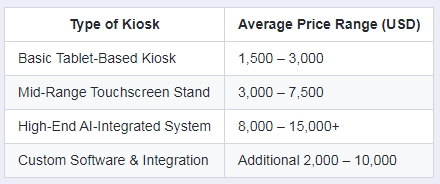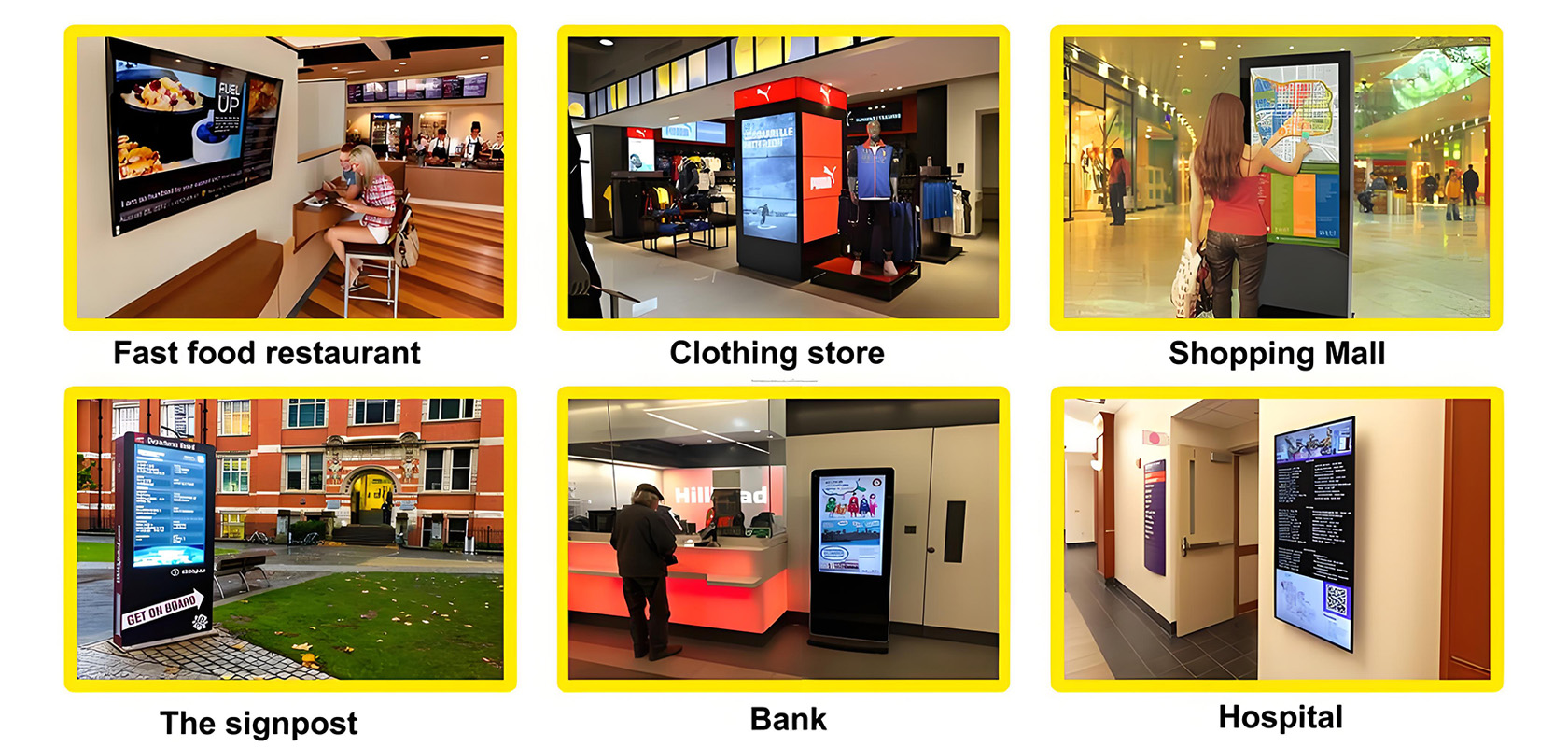
Introduction: Why Self Ordering Kiosks Matter in 2025
Walk into any fast-food restaurant, modern café, or convenience store today, and you're likely to see a self ordering kiosk standing right near the entrance. These sleek digital stations have quietly transformed customer service—cutting down wait times, boosting order accuracy, and freeing up staff.
But for many dealers and business owners, one question remains front and center.
The answer isn’t one-size-fits-all. Prices vary based on features, hardware, software licensing, and installation. This guide breaks down everything—from budget-friendly setups to enterprise-level touchscreen systems. We'll also highlight real examples, cost breakdowns, and the best products available this year.
Let’s start with the numbers. Here's a general pricing range for self-service kiosks in 2025:

Understanding what goes into the pricing can help you determine what kind of investment makes sense for your business.
At the core of every kiosk is a touchscreen. But there’s more:
- Touchscreen size and resolution: A 21-inch HD screen will cost less than a 32-inch 4K screen with anti-glare coating.
- Printer integration: Useful for order receipts or queue tickets.
- Payment terminal: EMV card readers, NFC (Apple Pay/Google Pay), and cash recyclers can significantly affect cost.
- Mounting style: Wall-mounted systems are typically cheaper than free-standing or countertop kiosks.
A big portion of self-ordering kiosk cost in 2025 comes from the software layer:
- Menu and product customization
- Order history and analytics dashboard
- Multi-language support
- Real-time inventory syncing
- AI-powered upselling
Licensing is typically SaaS-based, meaning you’ll pay anywhere from $50 to $300 per kiosk per month, depending on the provider and feature set.
Custom branding, menu design, and back-end integration with your POS or ERP system can increase upfront costs. Some vendors offer plug-and-play models, but large chains often invest in fully branded, integrated solutions.
Think of big players like McDonald’s and Taco Bell. These chains have rolled out thousands of kiosks, but smaller restaurants are joining in too. With minimum wage increases and staffing challenges, self-service kiosks help streamline labor costs and reduce queue times.
A fast-growing burger chain in Texas reported a 22% increase in average ticket size within three months of installing ordering kiosks at two locations.
In 2025, ordering kiosks aren’t just for food. C-stores now let customers buy coffee, hot food, or even select gift cards and prepaid services through a kiosk—reducing lines and improving upsell opportunities.
Custom drink orders, loyalty integration, and tip screens make self ordering kiosks a perfect match for modern cafés. Most opt for compact, countertop units starting around $2,000.
Looking for the best solutions on the market? Here’s a roundup of some of the highest-rated kiosks based on functionality, price, and support:

Each of these providers offers scalable solutions depending on how many kiosks you need, what kind of payment systems you require, and how much backend customization you're looking for.
Here’s the thing: your kiosk might cost $5,000 up front, but over time, it can pay for itself in increased revenue and reduced labor.
- 15–20% boost in average ticket size from suggestive selling
- 30% faster order time compared to staffed checkout
- Up to 50% savings in labor hours per day
- Ongoing software subscription
- Hardware servicing or replacement
- Internet and network infrastructure upgrades
- Training and onboarding
Many businesses choose leasing options in 2025, especially when scaling across multiple locations. Monthly leasing can range from $150 to $500 per kiosk, depending on features.
Pro tip: Leasing often includes maintenance and updates, which lowers risk. However, outright purchasing gives more control and often results in lower long-term cost.
If you're a dealer looking to stock high-demand tech or a business owner trying to cut labor costs and improve customer experience, a self ordering kiosk is more relevant than ever in 2025.
But price matters—and understanding what’s included (and what’s not) is key.
Start with a clear goal: Are you looking for speed, data insights, or a better customer journey? Then choose a kiosk model that aligns with your operation’s size, customer base, and future plans.
Look into vendors offering bundled hardware + software packages, and don’t forget to ask about free trials and warranty support. The right solution might cost more upfront—but it can change your entire customer flow.
Current article link: https://www.lcdkiosk.com/news/1446.html

Tel
